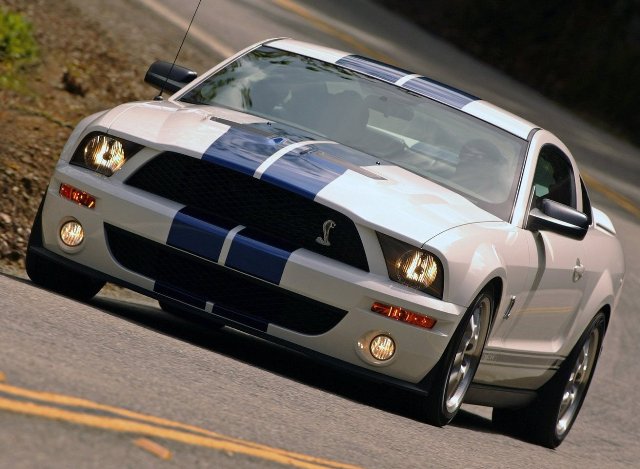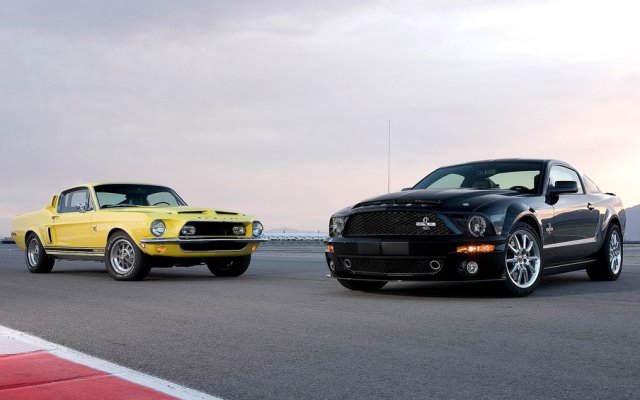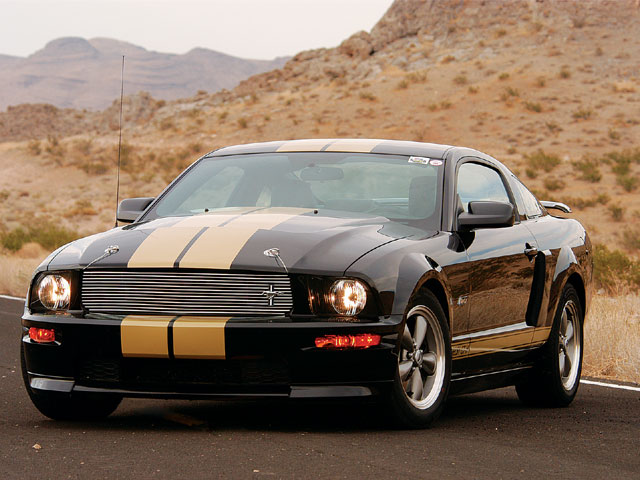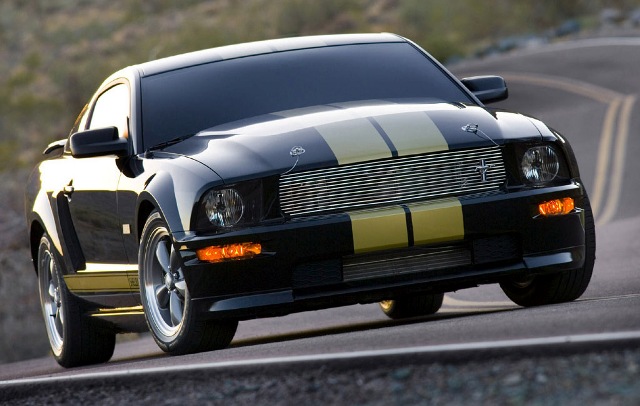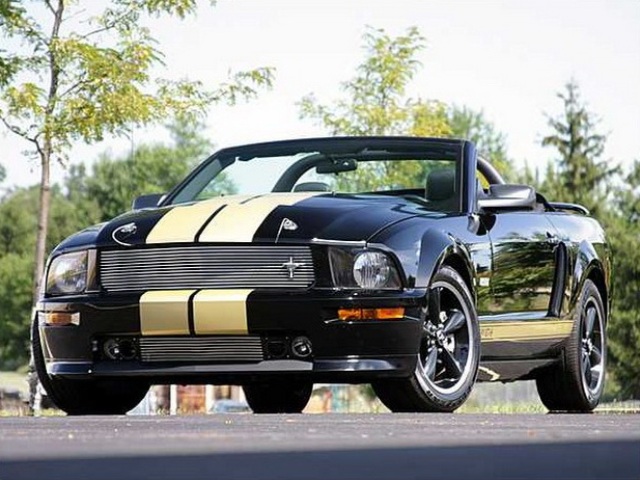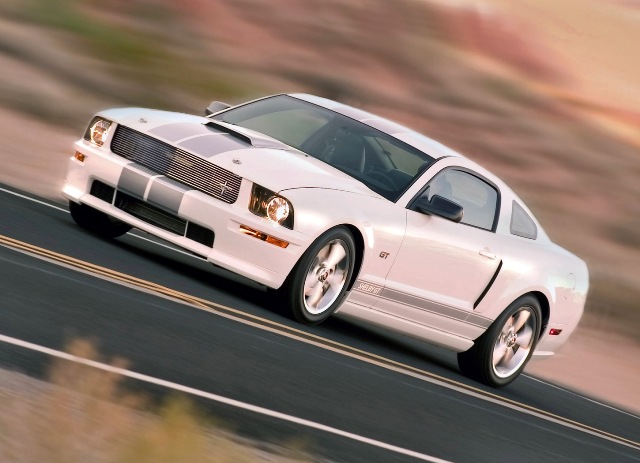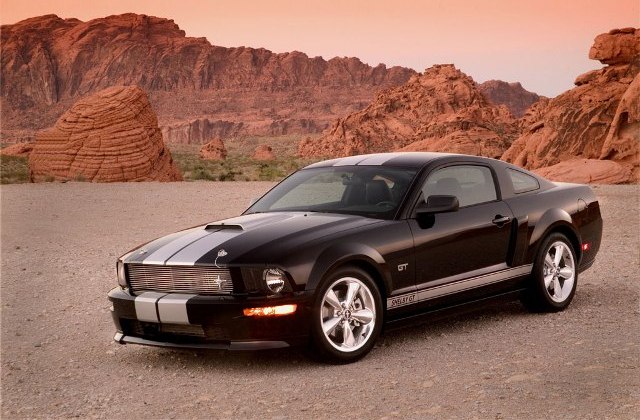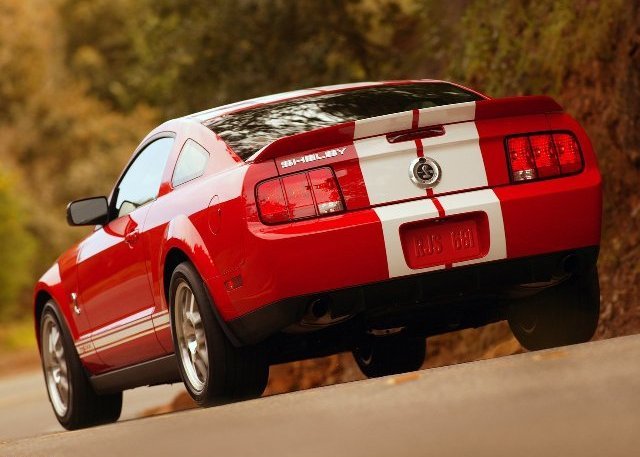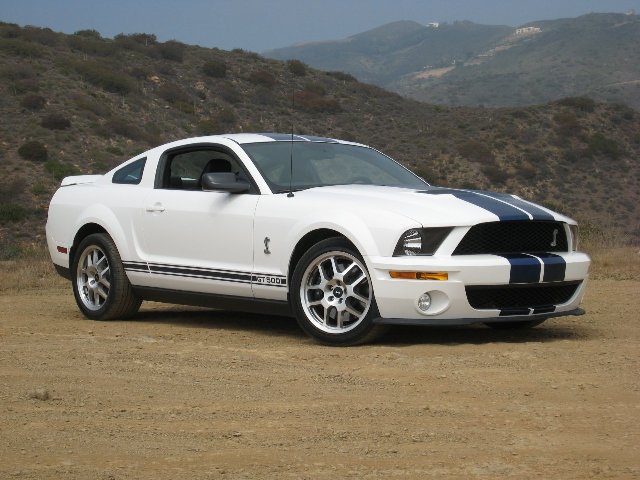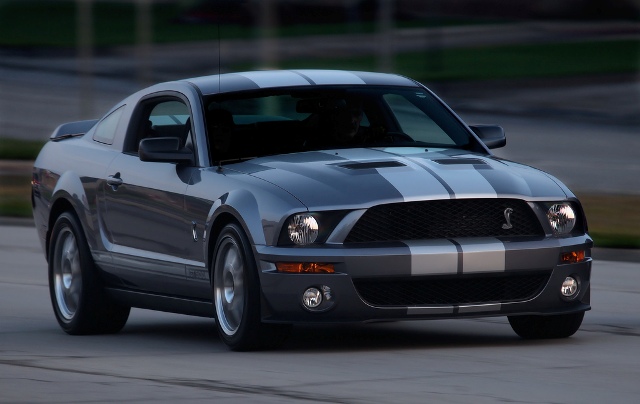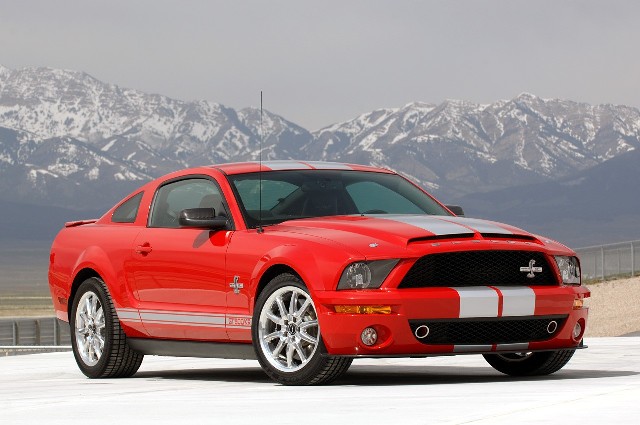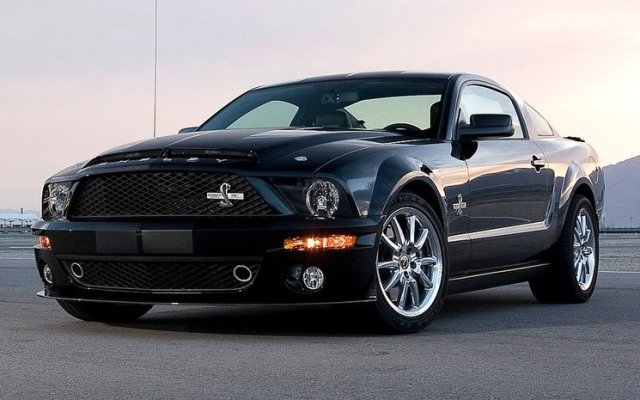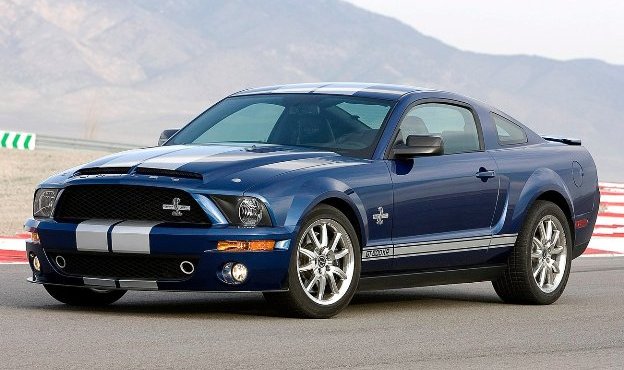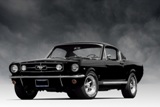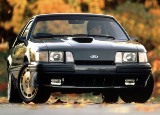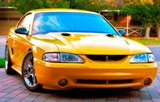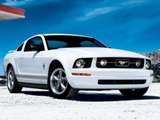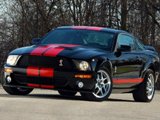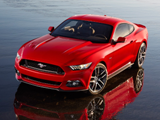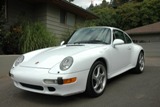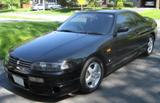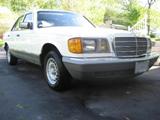Enthusiast's Corner
2006-2009 Shelby Mustangs: Shelby's Back!
Written by James Dolan
The Return of Shelby
It had been over thirty years since Carroll Shelby ended his relationship with Ford and shut down Shelby Automotive in 1969. After spending much of the 1970’s in Africa and getting involved in the big-game hunting business, Carroll got lured back into the automotive business by his old friend Lee Iacocca who was now the head of the Chrysler Corporation. Iacocca was the mastermind and driving force in Chrysler’s bounce back from near bankruptcy in the late 1970’s and early 1980’s.
Once the company was stabilized Iacocca wanted to build up the company’s brand and in particular performance image for Dodge. Remembering the success Carroll Shelby had in the past with modifying Mustang’s and building high performance Ford powered vehicles, Iacocca felt that Shelby was the right person to inject some excitement into the company’s conservative line-up. While working with Chrysler Shelby made a few exciting vehicles such as Shelby versions of the front wheel drive Charger and the particularly entertaining Omni GLH; however Shelby was still best known and loved for his work with Ford.
But it seemed that Ford and Shelby would never work together again since a lot of bad blood was created between the two parties over Ford’s use of the GT350 name for the 1984 20th Anniversary Mustang. Shelby sued Ford and for many years Ford and Shelby battled in the courts. Eventually the two settled their court case and decided to move on, going in separate directions. However Shelby’s icy relationship with Ford began to thaw when Carroll ran into Edsel Ford II at the 2001 Pebble Beach Concours. The two men had a relation ship going all the way back to the 60’s when a teenaged Edsel lived with Shelby in the summer of 1968 while working for Shelby American. The pair decided it was time to burry the past and perhaps rekindle a business relationship once again.
Edsel hooked Shelby in when he mentioned that Ford wanted to build a modern version of the GT-40 supercar for the street and perhaps build some special Mustangs with Shelby. Not long after his chance meeting with Edsel, Shelby was back at Ford world headquarters working with Ford and its SVT division on the future Ford supercar and a modern GT500. But Shelby didn’t just want to have Ford building fast Mustangs with his name on them, in fine Shelby tradition he wanted to build some high performance Mustangs of his own and Ford obliged.
2006-2008 Shelby GT-H and GT
The first vehicle to result in the rekindling of the Ford/Shelby relationship was the Shelby GT-H and GT. Shelby and Ford racing teamed up to modify a series of Mustang GT’s and market them as Shelby’s. First out of the gate was the 2006 Shelby GT-H. Back in 1966, you could stroll into a Hertz Rental Car agency and come out driving in a Shelby G.T.350H “Rent-a-Racer”. These hot rentals became legendary with stories of cars coming back with shredded tires or engines replaced with a lower powered unit from a lesser Mustang. To commemorate the 40th anniversary of the program Shelby and Hertz once again teamed up to offer a modern “Rent-a-Racer” with the Shelby GT-H.
The Shelby GT-H was based on a stock Mustang GT that had been warmed over by Shelby. Just as had been done in the 1960’s, Ford sent cars to Shelby to be transformed. Mustangs were shipped from its Flat Rock, Michigan, assembly plant to Shelby Automobile’s facility in Las Vegas. Once at Shelby’s facility work began to create the GT-H.
For 2006 the Shelby GT-H was available only as a coupe and finished in black with twin gold “Le Mans” style stripes that went up and over bumpers, hood and rear decklid. Other exterior touches included a Mustang GT/CS front bumper cover, a unique hood with hood pins, a billet aluminum grille, special wheels, side scoops just aft of the front doors, a rear spoiler and gold Shelby GT-H side stripes and Shelby/Hertz emblems.
Under that unique hood was the 4.6-litre, single overhead-cam three-valve V-8 from the Mustang GT that had been enhanced with the Ford Racing FR1 Power Pack from the Ford Racing parts catalog. The FR1 package consisted of a cold-air intake, a reflashed engine management computer with a more aggressive timing curve, a unique exhaust X-pipe and freer flowing mufflers. These changes bumped horsepower up to 325-horsepower and torque increased by 10 pound-feet.
All GT-H’s were equipped with the 5R55S five-speed automatic transmission, as this was still a rental car after all. To give the GT-H more kick off the line the standard rear axel with it 3.31:1 gear ratio was swapped out for a unit containing a more aggressive 3.55:1 ratio.
To keep the Shelby GT-H planted firmly to the ground the suspension was modified with Ford Racing’s FR3 Handling Pack. This package included thicker sway bars front and rear and a cool twin-tube strut tower brace. Also included were a set of dampers tuned by Multimatic and stiffer springs that dropped the ride height by 1.5-inches. Wheels on the GT-H were the standard Mustang GT “Bullitt” style 17-inch alloys. In order to protect the GT-H from over exuberant rental clients the traction control defeat switch was defeated preventing any renter from performing a grand smokey burnout or extreme drifting maneuvers.
Inside, the Shelby GT-H was bone stock Mustang GT save for a serial-number ID badge on the dash to remind the rental client that thy were in something special.
Production was limited to 500 vehicles all of which were sold directly to Hertz for use as rental units in the company’s Fun Collection. The cars were available for rent through 19 select Hertz airport locations in California, Nevada, Arizona, Colorado and Florida. The only way a member of the public could buy a GT-H was to wait until Hertz was finished with the car and sold off through dealer auctions.
With the 2006 Shelby GT-H being such a huge success for Hertz, Shelby and Ford, the trio decided to continue the program into 2007 but this time the GT-H would be offered as a convertible. The same modifications that had bee made to the coupe were also made to the convertible with the only difference being that the 2007 Shelby GT-H convertible wheel and tire package was upgraded to 18-inch “Bullitt” style aluminum wheels finished in black and shod with P235/55ZR18 performance tires. For additional stiffness and a touch of style a light bar and supplemental bracing was also added to the convertible. Once again only 500 of the Shelby GT-H convertibles were produced but this time only 499 units made it to the Hertz rental fleet.
Because the reaction of the public and press was so strong regarding the 2006 GT-H and the newly rekindled relationship between Ford, Shelby and Hertz; it was decided to auction off the first 2007 Shelby GT-H convertible for charity. When the bidding was finished car#001 sold for a jaw dropping $250,000!
By 2007 Shelby fever had reached an all time high and there was a massive public demand for the used Shelby GT-H’s from Hertz. Ford and Shelby decided it was time to offer the car to the public and sold it through Ford dealers as the Ford Shelby GT.
As with the 2006 GT-H, the 2007 Shelby GT was only offered in coupe body style but unlike the GT-H that could only be had in black with gold stripes the GT was offered either in white or black with silver Le Mans stripes. Other exterior detail differences included the deletion of the rear spoiler and the elimination of the unique GT-H fiberglass hood in favor of the factory aluminum hood with a riveted-on hood scoop that closely resembled the one installed on the original 427 Cobra. The “Hertz” front fender emblems were also replaced with more appropriate “Powered by Ford” badges. Otherwise the Shelby GT had the same front fascia and billet grille found on the GT-H.
Inside, Shelby threw in a set of “Shelby GT” floor mats, a pair of machined-aluminum sill plates and an aluminum plaque on the dash with the car’s Shelby serial number into the all black and otherwise stock Mustang GT interior.
All the performance hardware that was installed on the GT-H was the same on the Shelby GT, however advertised power was down to 319-horsepower and 330 pound-feet of torque after Ford recertified the power package.
The main mechanical difference between the Shelby GT-H and GT lies within the transmission. While the Hertz version was only produced with the 5R55S automatic transmission the Shelby GT was offered with a choice of either the 5-speed automatic or manual transmission. When the manual transmission was ordered it was fitted with a Hurst short shifter crowned with a white shift knob. Thankfully the gearing on the rear end was same as the GT-H; however the traction control on the Shelby GT could be switched off unlike its rental fleet cousin.
Again, the Shelby GT was fitted with Ford Racing’s FR3 Handing Pack but now the GT rode on larger 18-inch aluminum wheels that had black painted centres on black cars while white GT’s wheels were polished aluminum.
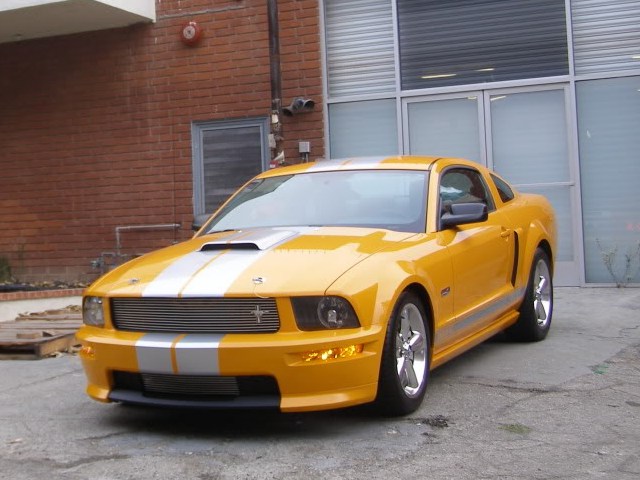
The 2008 Shelby GT-C was made for only California.
The Shelby GT-H program was discontinued for 2008 however the Shelby GT lived on and was now available as a coupe or convertible. The colour palette was expanded with the addition of Vista Blue to the line up and a special Grabber Orange for the California only GT-C. Both colours came with the metallic silver Le Mans stripes while black cars wore a set of red stripes for 2008.
While the Shelby GT-H and GT were great performing cars with some worthwhile modifications and a rich history behind them, they weren’t all that special in realty. These cars were expensive with list prices that were over $10,000 more than the standard Mustang GT. Worse still anyone could easily open up, or these days click on-too, the Ford Racing catalogue and buy the FR1 and FR3 performance packages for less than $2,500 and install it themselves. The intrinsic value of the car just wasn’t the same as the other Mustangs that had been offered throughout history.
However because these Mustangs had Shelby’s name on them and had represented the first Shelby influenced Ford car in over 35 years people nearly went insane over them with many cars trading hands for more than $50,000 when they were first introduced. Although the Shelby GT-H and GT may not be the fastest Mustangs Shelby ever touched, they did show how powerful the Shelby and Ford brands were when they partnered together. They also wetted the public’s appetite for return of one of the most anticipated and legendary cars in the history of the Mustang, the Shelby GT500!
2007-2009 Mustang Shelby GT500
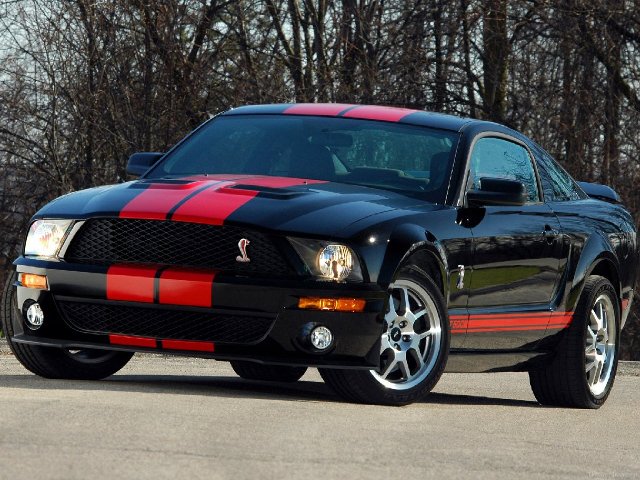
2007 Ford Shelby GT500 Mustang
The highlight of the first series of S197 Mustangs without a doubt is the 2007-2009 Shelby GT500; the most powerful production Mustang to ever hit the streets to that point. Originally, the GT500 was developed by Ford’s Special Vehicle Team (SVT) as a replacement for the awesome 2003-2004 ‘Terminator’ Cobra. In fact, the modern Shelby GT500 was much more a Ford and SVT product than it was a Shelby. As a matter of fact, the GT500 was produced right along side the standard Mustangs at Ford’s AutoAlliance assembly facility in Flat Rock, Michigan. This is in contrast to the very early Shelby Mustangs and the modern Shelby GT-H /GT; where standard Mustangs were taken from the production line and shipped to a Shelby facility to be modified. Yes Carroll had some input on the car; especially when it came to esthetics and keeping the new GT500 true to his principles, but really most of the credit for this car should go to the engineers at SVT.
However, since Carroll Shelby was once again working with Ford and he had been such a dominate character in the history of the Mustang as well as a marketing gold mine, it was quickly clear that any high performance, specialty Mustang would have to bare his name and the SVT branding was quickly pushed aside. This wasn’t necessarily a bad situation as Shelby fever among enthusiasts was at an all time high. Old Carroll had been living on borrowed time for many years and people were clamoring for another rip roaring Shelby Mustang to hit the streets since this could very well be Shelby’s last Mustang creation. People didn’t care that Shelby’s influence on the car wasn’t as involved as it once was they were just thrilled that he was back in the game with Ford and had his name on a Mustang once again.
The heart of the GT500 was a fire breathing 5.4-litre twin-cam 4-valve per-cylinder V-8 producing a heart stopping 500-horsepower and a stump pulling 480 pound-feet of torque. Contrary to popular belief the engine in the GT500 is not a detuned unit from the Ford GT supercar. While the Ford GT used an aluminum engine block, dry-sump oiling and Lysholm twin-screw supercharger, the GT500 had an iron block, wet-sump oiling and a smaller, less efficient Roots-type blower. While the engine in the GT500 is not as exotic as the Ford GT it is still an awesome piece of engineering.
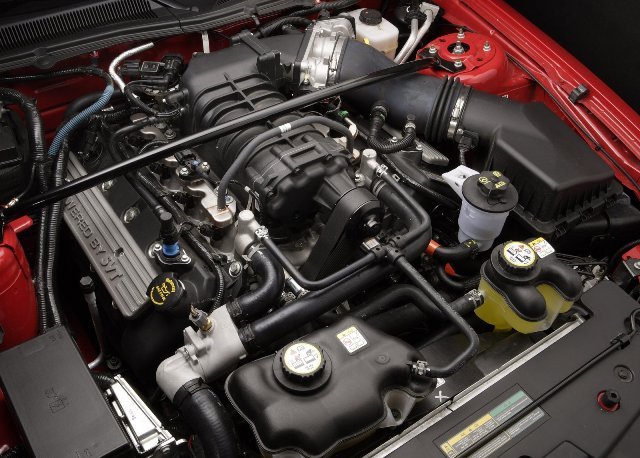
The GT500's 5.4-litre supercharged V-8 cranked out a astonishing 500-horsepower.
With the lessons learned from the Terminator Cobra program SVT engineers stuffed the 5.4-litre iron block with a forged-steel crankshaft connected to forged-steel I-beam connecting rods and forged aluminum pistons. Bolted to the block are a set of aluminum cylinder heads sourced from the Ford GT supercar. These four-valve heads required some machining changes to the outside ends of the heads and to the left rear cam cap in order for them to fit into the Mustang’s engine bay. A set of camshafts from the Terminator Cobra were fitted to operate the valves. Finishing off the heads were a pair of valve covers finished in satin black with special “Powered by SVT” finned-cam covers.
An all-new low-profile lower intake manifold was installed that helped lower the overall height of the engine so that it could easily fit under the GT500’s hood. Attached to that manifold was a Roots-type supercharger capable of producing 8.5 pounds-per-square-inch of boost and a water-to-air intercooler used to cool the intake charge for maximum horsepower and torque. Air entered the supercharger through a 60-millimeter dual bore electronic throttle body borrowed from Ford’s 6.8-litre V-10 truck engine.
Spent exhaust gases flowed through a pair of unique exhaust manifolds that helped to better scavenge gases out of the cylinders to a tuned stainless steel X-pipe and then through a dual-exhaust with twin custom tuned mufflers at the rear of the car.
Engine cooling was handled by a high-capacity aluminum radiator and an oil-to-water stacked dish engine oil cooler. Excess engine heat was also vented out through a functional air extractor hood.
Just as had been the tradition of the Cobras from the past decade all of the GT500 engines were hand assembled on the niche-line at Ford’s Romeo engine plant with each engine receiving a plaque singed by the team members who built the engine affixed to the left valve-cover. The 5.4-litre supercharged V-8 was the largest-displacement engine installed in a regular production Mustang since 1973 and with 500-horsepower it made the 2007 Shelby GT500 the most powerful factory-built Mustang ever.
To handle that thundering horsepower and torque, power was rooted through a heavy-duty Tremec TR6060 6-speed manual gearbox. The TR6060 was essentially an upgraded version of the T-56 6-speed transmission that saw duty in the 2000 SVT Cobra R and later in the supercharged Terminator Cobra. For the Shelby GT500 the TR6060 was geared to make the most of the 5.4-litre’s healthy power band. At the rear was a modified 8.8-inch gear-set with a 3.31:1 gear ratio with limited slip.
With 500 supercharged horsepower lurking beneath the hood, the GT500 required some upgrades to the suspension and brakes to keep the car on the road. Stiffer springs along with Tokico struts and shocks were installed that slightly lowered the car and sharpen the handling. Despite its bigger, heaver engine up front the GT500 still managed to corner relatively flat thanks to the use of stiffer stabilizer bars. Up front the GT500 used a 34-millimeter tubular stabilizer bar while at the rear coupe versions had a 24-millimeter bar and convertibles came with a 20-millimeter bar. For added body structure rigidity a strut tower brace was also part of the package.
Interestingly, the GT500 wasn’t equipped with an independent rear suspension as had been promised when the S197 Mustang had been introduced in 2005. SVT’s new boss, Hau Tai-Tang, who took over the reins at SVT after John Coletti’s retirement at the end of 2004, believed that the handling benefits would not justify the extra cost and customers would be hard pressed to notice the difference. Besides, there had been a small but very vocal group of old –school drag racing enthusiasts who were rather upset that the 2003 Cobra had been produced with an IRS as I had witnessed at a gathering of Cobra owners at SVT headquarters in the summer of 2003. While a well developed IRS would have brought the GT500 to the next level in regards ultimate track handling performance, the solid axle was acceptable for most driving situations on the street.
Although SVT didn’t go all the way with the rear suspension, that doesn’t mean the GT500 wasn’t a fun handling car as it felt crisp with its precise steering response. To achieve this, the steering gear was enhanced with a unique torsion bar and a special power steering pump was specified. Additionally a brace was added that connects rear lower arm bushings side to side.
To put the power down to the road the GT500 used staggered sized Goodyear Eagle F1 Supercar rubber mounted on 18x9.5-inch aluminum wheels. Tire size up front was P255/45ZR18 and a beefy P285/40ZR18 at the rear.
Hiding behind those massive wheels and tires was a set of Brembo front brakes with massive 14-inch rotors and huge four-piston calipers. At the rear, the GT500 still had the 11.8-inch vented rotors with single-piston caliper from the Mustang GT however a unique pad material was employed for better bite. Everything kept under control by a four-channel ABS system with a traction control that could be defeated with a push of a button.
The exterior of the GT500 was treated to some unique styling cues and aerodynamic tweaks to make the car look more aggressive while standing still and more stable at high speeds. A new front fascia with a big mouth grille, round fog lamps below the turn signals and modest air splitter at its base gave the GT500 a menacing look while allowing much needed air into the engine compartment. A chrome snake insignia was installed on the left side of the grille that pronounced to the world that this was no ordinary Mustang. A powerdome hood with built in heat extractors near its leading edge, which allowed the heat from the monstrous blown 5.4 to escape was installed.
Wide Le Mans style striping was standard on the coupes but was curiously unavailable on the convertibles. Not to be made to feel left out by the lack of stripes convertible owners were treated to a premium cloth convertible top similar to the one installed on the 2003 and 2004 Cobra. Either body style wore the traditional Shelby rocker-panel stripes with GT500 script. If the buyer wanted a more modest looking GT500 there was an option to delete either or both sets of stripes. Another pair of forward facing coiled snakes adored the front fenders making it clear that this Mustang meant business.
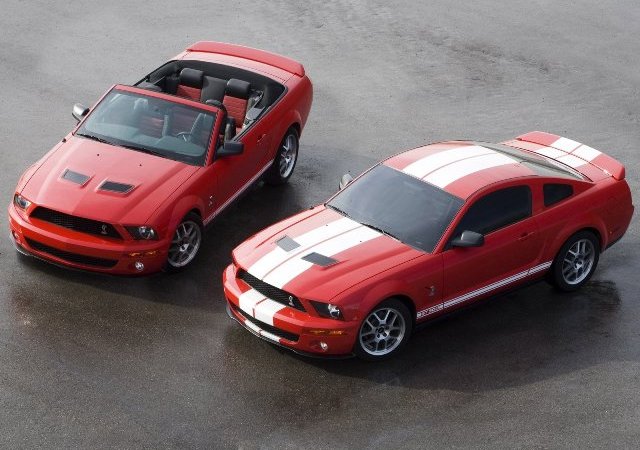
2007 Ford Shelby GT500 coupe and convertible
At the rear, an air diffuser below the rear bumper, similar to the one installed on the California Special, was installed. Affixed to the deck lid was a carefully shaped ducktail spoiler that was designed to optimize high-speed stability. The deck lid also wore large “SHELBY” block lettering and the faux fuel-filler cap was redesigned with a coiled snake and “Shelby GT500” lettering. The look of the GT500 was aggressive and menacing without being over-styled or over the top. With the stripe delete it was particularly stealthy.
Inside, the GT500 was available in either Charcoal Black leather or a Charcoal Black and Crimson Red leather combination depending on exterior colour choice. The seats offered more lateral support than those available in the Mustang and featured an embossed coil snake insignia. Satin-finish aluminum trim adorned the dash while white faced gauges with a boost gauge faced the driver. The speedometer and tachometer swapped positions and the SVT logo in the tachometer lit-up when the engine approached red-line so that the driver could more easily see when to shift. For a little extra flair the gauge illumination could be switched between a red/blue combination and all white. A unique steering wheel was installed that featured palm grips and was leather wrapped with red stitching. There was also a Cobra logo on the steering wheel hub.
Owners could outfit their GT500 with a couple of luxuries such as Sirius Satellite radio and the Shaker 1000 audio system that replaced the standard Shaker 500 unit. There was also a GT500 Premium Interior Trim package that included wrapped and stitched instrument panel brow and centre console, upgraded door armrests, auto-dimming rearview mirror with compass, and aluminum pedal covers.
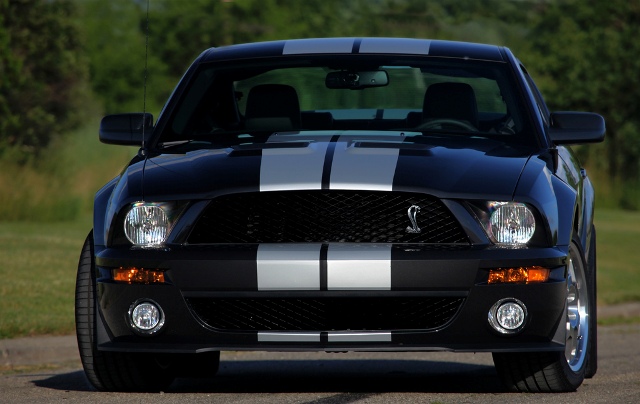
2009 Ford Shelby GT500 Mustang
Hau Thai-Tang, the S197 Mustang’s chief engineer who had been promoted to director of Advanced Product Creation and head of SVT proclaimed “Our goal was to build the most powerful, most capable Mustang ever.” Well the 2007 Shelby GT500 was certainly the most powerful regular production Mustang ever produced; however there were doubts that it was the most capable. While Ford’s initial performance claims of 0-60 mph in 4.0 seconds, a quarter mile time of 12.5 seconds at 116 mph, and 0.94g on a skid pad seemed to support Thai-Tang’s claims, the GT500 had a hard time repeating those performance numbers in the real world.
Part of the problem lay within the weight of the GT500. This car was decidedly porky weighing in at 3,950-pounds for the coupe, some 300-pounds more than the Cobra it replaced and a staggering 600-pounds heavier than a Chevrolet Corvette coupe. The convertible fairs even worse at a rotund 4,040-pounds. Worse yet, the car was significantly unbalanced with 57 percent of its weight hanging over the front wheels. The toll for wedging that sensational supercharged iron-block V-8 under the hood of the GT500 was pretty high.
Although the GT500 was overweight and nose heavy it was still a sensational performing car with most testers being able register 0-60 mph times of 4.5-4.7 seconds and quarter mile times around 12.8 seconds with the speedometer pointing just past 110 mph. Certainly not slow by any stretch of the imagination, but no faster than the last generation Cobra and many people expected the 500-horsepower GT500 would blow the Cobra off the road.
There are a few reasons for this; there is no doubt that the weight is partially to blame but that isn’t the complete picture. Where the 390-horsepower Terminator Cobra had decidedly underrated advertised horsepower and torque numbers, the GT500 had exactly 500-horsepower as advertised meaning the GT500 had less of a power advantage then would first appear on paper. The other difference is gearing, the Cobra was offered with a rear gear ratio of 3.55:1 while the GT500 had a lower ratio of 3.33:1. This meant that the Cobra could get more of its power down to the ground at a rapid rate than the GT500 could and therefore clip off similar acceleration times.
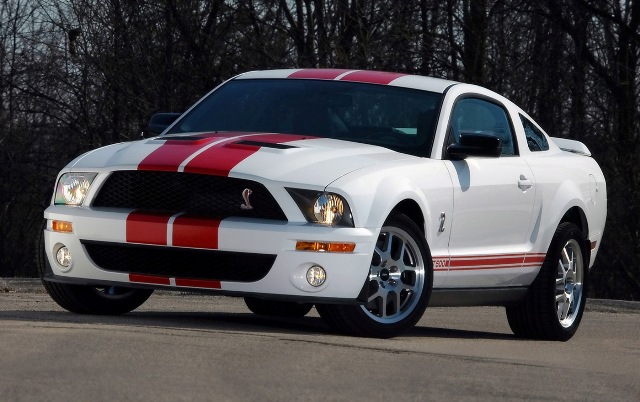
2007 Ford Shelby GT500 Mustang
Although the GT500 was nose heavy, handling was surprisingly predicable and balanced while ride quality was amazingly compliant. The GT500 could turn into a corner crisply with enough grip available to get the car out through the other side without too much drama. When driven aggressively on public roads the GT500 was a complete joy and had capabilities that were far beyond that of the average driver. Plus the relaxed ride made the GT500 a credible daily driver and long distance tourer.
Only when the roads get rough would the solid rear axle rear its ugly head with its heavy unsprung weight bouncing about upsetting the GT500’s handling. Driven to its limits the GT500’s fun factor would quickly diminish as the weight imbalance would highlight the handling weaknesses. The front end would begin to plow and weight transfer to the front end under hard braking only exaggerated the effect making the driver lose some confidence. Back off a touch however, and the GT500 returns to being a thrilling ride, in a good way.
Braking was superb, there is really nothing bad that can be said about a set of fade free, huge Brembo brakes and a solid pedal feeling brake pedal. Hit the pedal hard enough and what or who ever isn’t strapped down inside the car will become air-born!
Overall, the GT500 is a legitimate thrill ride with all its power sliding, tire shredding and throw you back in your seat acceleration madness. It’s fast enough to scare the crap out of you, yet civilized enough to take you anywhere you want to go day in and day out, as long as you can put up with its heavy clutch and stiff gear change. What the GT500 sacrifices in ultimate performance it more than makes up for it with comfort and a heritage that few cars in its class could match.
2008-2009 Shelby GT500KR
What happens when you hand a GT500 over to Carroll Shelby for a little extra spice? You get the GT500KR! It had been 40 years since the first GT500KR “King of the Road” hit the streets and Carroll Shelby decided to mark the occasion with a modern version of his tire shredding masterpiece.
Shelby GT500KR’s started life as standard GT500s built at Ford’s Flat Rock, Michigan assembly plant. The cars were then transported by rail to Shelby Automobiles in Las Vegas, Nevada where they were converted into KR’s.
Power was bumped up to 540-horsepower and 510 pound-feet of torque. This power increase was achieved with the installation of a new cold-air intake system that worked in conjunction with a new carbon-fiber hood that ducted cool outside air directly into the intake. The engine management system was also recalibrated to attain maximum power with increased spark advance. Exhaust gases exited out of the GT500KR through a specially tuned stainless steel exhaust that gave the KR a distinctive bark.
The transmission in the KR was fitted with a short-throw gearshift mechanism topped off with a with white ball shift knob. At the rear the 3.33:1 gear ratio from the GT500 was swapped out for a shorter 3.73:1 axle ratio that helped get the KR down the road with more urgency than the standard GT500.
Suspension modifications included all-new firmer rebound valving for the Tokico shocks and struts. New stiffer springs were also installed that had spring rates increased by 17 percent in the front and 7 percent in the rear. The front end geometry was revised with more negative camber and zero toe-in. The re-valved dampers and revised spring rates meant that the stabilizer bars could be slightly reduced in size. An ultra ridged Ford Racing strut tower brace completes the suspension package.
Wheel and tire sizes remained the same as the GT500 however the GT500KR wore 18-inch forged polished aluminum wheels from Alcoa shod with Goodyear Eagle F1 Supercar tires that featured a new ultra sticky tread compound specially made for the GT500KR. These new tires had a tread wear rating of just 180 versus the 220 rating for the GT500 and could be identified by a small winged foot emblem embossed on the sidewall.
The exterior of the GT500KR was dressed up with 40th anniversary badging, a carbon-fiber front chin splitter and the aforementioned cold air-induction carbon-fiber hood that also featured hood pins and heat extraction vents. This complex hood was very light saving 11-pounds over the already lightweight aluminum hood of the GT500. Inside the trunk of ever KR was a nifty brake cooling duct system that the owner could install if they felt compelled to take the car out for a track day outing.
With only 1,712 units produced during its production run from 2008 to 2009 the GT500KR is a very rare beast and that’s not surprising since list price was a staggering $79,995. Not only was this the most powerful Mustang ever produced with a factory warranty, it was by far the most expensive. To put this into perspective the standard GT500 came in at around $45,000, although many sold $10,000-$15,000 above asking price, it still none the less makes the GT500KR very hard to justify since the performance gain isn’t all that great. Compared to other sports cars that were $80,000 or less the GT500KR was a bit of a lame duck for the money. Take the price out of the equation however; the GT500KR is one hell of a great Mustang.
Shelby Super Snake
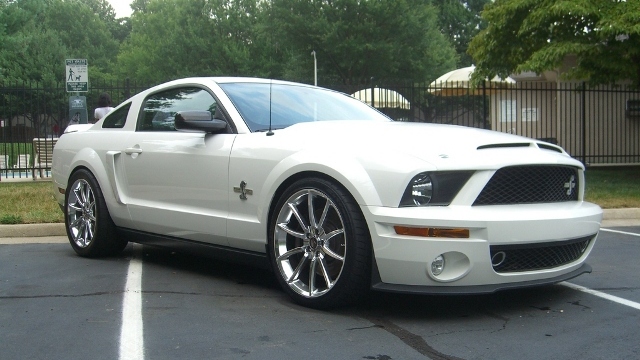
2008 Shleby Super Snake Mustang
So what if you had already bought a GT500 and wasn’t satisfied with its awesome performance and just happed to have an extra $27,995 sitting in your bank account doing nothing? Well you send your GT500 to Carroll Shelby in Las Vegas and he’ll convert your GT500 into a fire breathing Super Snake.
Super Snake customers could choose from a “standard” 605-horsepower version that used the GT500KR’s cold-air intake and a new, larger capacity supercharger from Ford Racing and full warranty. Optional was the insane Kenny Bell, twin-screw supercharged 725-horsepower version that forfeited the warranty when ordered.
Apart from the colossal engine options the Super Snake package also came with larger 6-piston caliper Baer brakes with front and rear cooling ducts, a tuned cat-back exhaust, Super Snake badging, 20-inch Alcoa wheels, a fiberglass ram-air hood, functional quarter panel side scoops, carbon-fiber front splitter and skirts and unique Super Snake stripes.
Shelby also fitted the Super Snake with Ford Racing’s Handling Pack, including thicker stabilizer bars, adjustable dampers, lowering springs and a heavy duty strut tower brace. The standard GT500 3.33:1 rear end was also swapped out for the GT500KR’s shorter 3.73:1 gear ratio.
Inside, the Super Snake received a Ford Racing short-action shifter, new gauges that showed the driver boost, oil and fuel pressure, custom Shelby sill plates and the traditional Shelby numbered dash plaque.

2008 Shleby Super Snake Mustang
Back in 2008 and 2009 the Shelby Super Snake was the ultimate Shelby Mustang you could own and Carroll Shelby once again proved why he is considered the king of the Mustang tuners.
The 2005-2009 S197 Mustangs were hugely popular. This was thanks to a lack of competition; wonderful nostalgic styling and Ford’s rekindled relationship with Carroll Shelby fueled that car’s popularity. But things were changing quickly; Dodge had brought back the Challenger and General Motors was getting back into the pony car game with an all new Chevrolet Camaro for 2010. Ford realized that they could not depend on the current Mustang forever and needed to freshen up the Mustang’s line-up in order to keep them in the game. These new Mustangs would prove to be some of the fastest, most powerful, aggressive looking and refined pony cars that Ford had ever offered. What a great way to kick off a new decade!
Click here to continue reading on the next page about the 2010-2014 Mustang...
Most Popular Articles

Japanese Nostalgic Vehicles: The next trend in classic cars
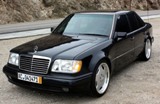
Five Sports Sedan's I'd Love to Own
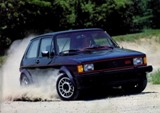
Hot Hatchbacks From the 1980's

Volvo 200 Series: An Unappriciated Classic

Triumph TR-6: Music to Anyone's Ears
Fifty Years of Mustang
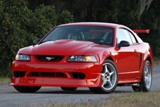
1999-2001 Ford Mustang SVT Cobra
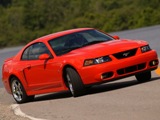
2003-2004 Ford Mustang SVT Cobra
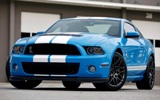
2010-2014 Ford Mustang Shelby GT500
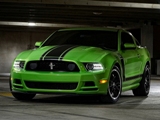
2012-2013 Ford Mustang Boss 302
Driven

Volvo 200 Series: An Unappriciated Classic

Triumph TR-6: Music to Anyone's Ears
1993 Nissan Skyline GT-s and GT-R Coupe

